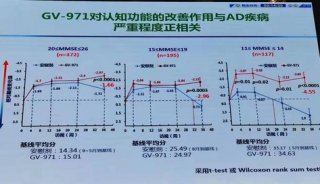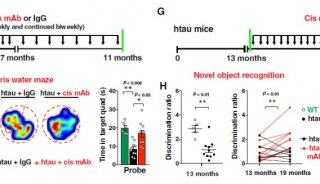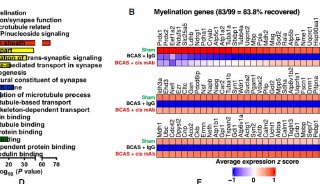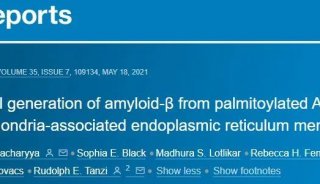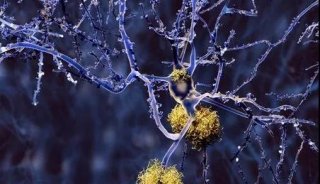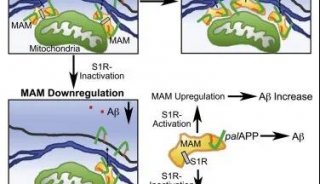阿兹海默病相关的全基因座分析
2009在nature genetics的第10期同时发表了两篇阿尔茨海默氏病 (AD)的全基因组相关性研究(GWAS),两项研究集中了欧洲和部分美国的AD研究中心的大量病例,期望能检测到除APOE以外与AD相关的基因。这两项研究都发现CLU基因的一个单核苷酸多态性位点(cluster, 作用与APOE相似)与散发阿尔茨海默氏病相关,另外两个基因CR1(complement component (3b/4b) receptor 1,可能与Aβ的清除相关)和PICALM(phosphatidylinositol-binding clathrin assembly protein gene,参与网格蛋白调节的内吞作用)分别在其中一项研究中达到基因组显著相关水平,而在另一项中没有达到,但p值都在10^-2到10^-3之间。
目前发表于JAMA的这项研究用到的European AD Initative和Genetic and Environmental Risk in AD Consortium数据就是来自于去年这两项研究,研究者将这部分已发表的GWAS数据和他们自己做的数据集中在一起做了meta分析,新发现了两个与AD相关的位点,并确认了CLU和PICALM与AD的相关性。之后他们在一个独立的西班牙样本中验证了这四个位点与AD的相关性。此外,作者分析了CLU基因和PICALM对预测AD的作用大小。
这项研究分三个阶段,第一阶段,整合了心脏和衰老基因组流行病学研究协会的基于人群的队列(1367例AD,973新病例),转化基因组研究所和Mayo AD GWAS 以前发表的结果,在共3006例AD病例和14642对照中鉴定到了强遗传相关性(p<10^-3)。有2708个单核苷酸多态性位点(SNPs)的p值小于10^-3。在第二阶段,把这些p值小于10^-3SNPs的结果与欧洲AD初步研究(2032病例,5328对照)集中在一起,确认了38个p<10^-5的SNPs(10个位点)。第三阶段,组合了这10个遗传位点与AD遗传和环境风险因素研究协会的数据,发现4个SNPs位点p值小于1.7*10^-8。 在含1140AD病例和1209例对照的西班牙样本中重复验证了这4个位点。全基因组相关性分析完成与2007-2008,荟萃分析和重复确认完成于2009年。

流程如图所示
这四个位点包括他们首次发现的两个具有全基因组显著相关水平位点:BIN1附近的rs744373(OR,1.13, 95%CI:1.06-1.21每次要等位基因拷贝,p=1.59*10^-11),EXOC3L2/BLOC1S3/MARK4附近的rs597667 (OR, 1.18; 95 CI, 1.07-1.29; P = 6.45x10–9)。虽然在独立样本中确定了CLU和PICALM与AD相关,但这两个基因的位点并没有改善一个包含年龄,性别和APOE在内的预测AD发病模型的功能(在Rotterdam研究中ROC曲线下面积从0.847提高到0.849,在心血管健康研究中,ROC曲线下面积从0.702提高到0.705)。
虽然这些位点并不能改进我们对AD风险的预测,没有临床意义,但他们或许涉及到生物学途径,在将来基础研究中起作用。
原文:
Genome-wide Analysis of Genetic Loci Associated With Alzheimer Disease
Context Genome-wide association studies (GWAS) have recently identified CLU, PICALM, and CR1 as novel genes for late-onset Alzheimer disease (AD).
Objectives To identify and strengthen additional loci associated with AD and confirm these in an independent sample and to examine the contribution of recently identified genes to AD risk prediction in a 3-stage analysis of new and previously published GWAS on more than 35 000 persons (8371 AD cases).
Design, Setting, and Participants In stage 1, we identified strong genetic associations (P < 10–3) in a sample of 3006 AD cases and 14 642 controls by combining new data from the population-based Cohorts for Heart and Aging Research in Genomic Epidemiology consortium (1367 AD cases [973 incident]) with previously reported results from the Translational Genomics Research Institute and the Mayo AD GWAS. We identified 2708 single-nucleotide polymorphisms (SNPs) with P<10–3. In stage 2, we pooled results for these SNPs with the European AD Initiative (2032 cases and 5328 controls) to identify 38 SNPs (10 loci) with P<10–5. In stage 3, we combined data for these 10 loci with data from the Genetic and Environmental Risk in AD consortium (3333 cases and 6995 controls) to identify 4 SNPs with P<1.7x10–8. These 4 SNPs were replicated in an independent Spanish sample (1140 AD cases and 1209 controls). Genome-wide association analyses were completed in 2007-2008 and the meta-analyses and replication in 2009.
Main Outcome Measure Presence of Alzheimer disease.
Results Two loci were identified to have genome-wide significance for the first time: rs744373 near BIN1 (odds ratio [OR],1.13; 95 confidence interval [CI],1.06-1.21 per copy of the minor allele; P = 1.59x10–11) and rs597668 near EXOC3L2/BLOC1S3/MARK4 (OR, 1.18; 95 CI, 1.07-1.29; P = 6.45x10–9). Associations of these 2 loci plus the previously identified loci CLU and PICALM with AD were confirmed in the Spanish sample (P < .05). However, although CLU and PICALM were confirmed to be associated with AD in this independent sample, they did not improve the ability of a model that included age, sex, and APOE to predict incident AD (improvement in area under the receiver operating characteristic curve from 0.847 to 0.849 in the Rotterdam Study and 0.702 to 0.705 in the Cardiovascular Health Study).
Conclusions Two genetic loci for AD were found for the first time to reach genome-wide statistical significance. These findings were replicated in an independent population. Two recently reported associations were also confirmed. These loci did not improve AD risk prediction. While not clinically useful, they may implicate biological pathways useful for future research.
-
焦点事件

-
焦点事件

-
科技前沿

-
焦点事件
